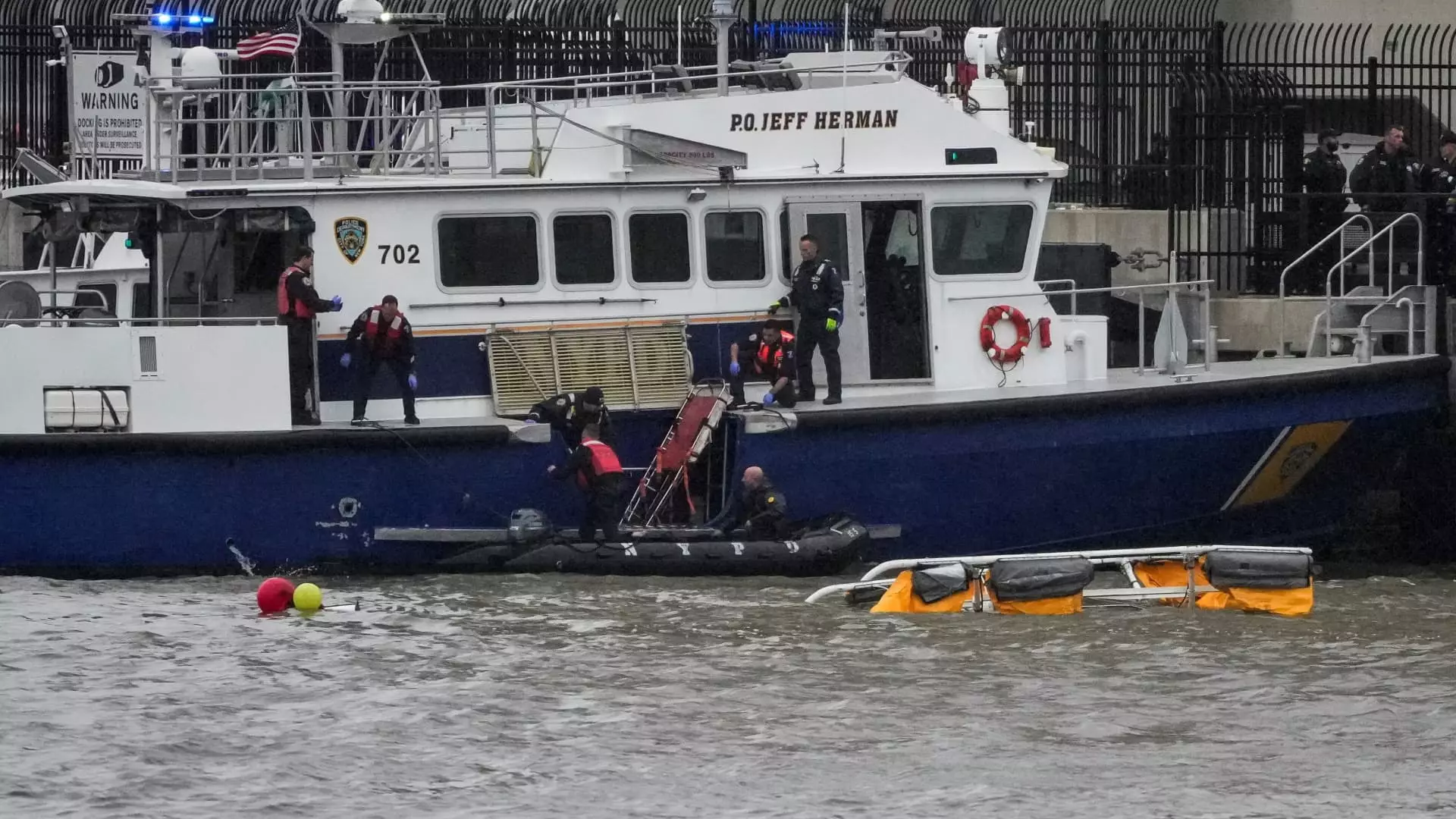In a heartbreaking incident, a helicopter crash in the Hudson River claimed the lives of at least five individuals on board. The ramifications of such tragedies resonate far beyond the immediate loss; they reverberate through communities and raise critical questions about aviation safety regulations and emergency responses. While the sixth passenger was miraculously rescued from the water, the catastrophic event left an indelible mark on the city and those who witnessed the chaos.
The Scene of the Tragedy
Witnesses described a chaotic scene, with videos circulating on social media that portray the aircraft inverted, submerged in the cold waters of the Hudson. An eyewitness account suggested a malfunction, noting that she observed the helicopter lose a propeller, leading to its abrupt descent. This underscores the equipment reliability challenges in aviation, raising concerns about the maintenance protocols of helicopters frequently used for sightseeing tours—a popular yet risky activity in urban settings. The specific model involved, a Bell 206L-4 LongRanger, may have history and characteristics that demand scrutiny and a reevaluation of safety procedures.
Flight Path Raises Questions
According to data from FlightRadar24, the helicopter had a defined flight path, typically associated with scenic tours along the river. It ascended to approximately 1,100 feet before taking an unexpected turn. The flight data shows that this aircraft was a regular at the Downtown Manhattan Heliport, performing numerous takeoffs and landings prior to the incident. However, with its last moments spent in the vicinity of Fort Lee, New Jersey, one must question whether the pilot was under undue stress or whether the aircraft had navigational issues. Was this merely a case of mechanical failure, or is there an underlying pattern that needs addressing in flight operations?
Investigative Chills Down the Spine
The National Transportation Safety Board (NTSB) is currently investigating the crash, a task that often reveals the complex layers associated with aviation accidents. While initial investigations may focus on immediate technical failures, they frequently expand to examine broader regulatory oversights, pilot training adequacy, and maintenance rigor. The public deserves transparency and thorough transparency—how many more such incidents must occur before tougher regulations are enforced? The aftermath of such tragedies can serve as a wake-up call for authorities to ensure that the safety and operational standards in the aviation industry evolve to prevent similar occurrences.
Letting the Community Heal
While the incident is undeniably tragic, it also fosters a spirit of community resilience. The collective mourning of those lost transcends personal grief; it amplifies calls for change and improvement in aviation safety protocols. Grieving families often turn to advocacy as a way to honor their loved ones, pushing for better regulations and safer flying conditions to ensure that such devastating accidents become a rarity rather than an unfortunate norm. The depth of sorrow can be a catalyst for essential change—let’s hope this incident sparks the reformation needed to bring about better safety standards in helicopter operations, ensuring that the skies above our cities are safe for all.


Leave a Reply